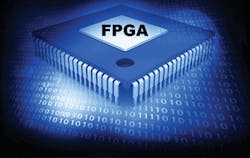To Disaggregate at the Edge or Not to Disaggregate?
That IS the Question for 2021.
For many years, Network Function Virtualization (NFV) was little more than a theory, a means of adding agility to the traditional hardware-based network and, ideally, significantly reducing the costs associated with procuring and maintaining hardware equipment. Today, enterprises have begun embracing network virtualization solutions as they promote quicker server provisioning and faster deployment of network services. Small and medium businesses are also turning toward heavier usage of virtualization solutions to enable consolidation of servers and applications, and to improve disaster recovery.
As expected, NFV offers much greater flexibility in addressing evolving requirements, provides added control over both current and future functionality, and eliminates vendor lock-in. It can therefore generate significant savings in an enterprise’s operational expenses.
InvisiLight® Solution for Deploying Fiber
April 2, 2022Go to Market Faster. Speed up Network Deployment
April 2, 2022Episode 10: Fiber Optic Closure Specs Explained…
April 1, 2022Food for Thought from Our 2022 ICT Visionaries
April 1, 2022Investment in the commercialization of 5G networks will also drive the demand for NFV solutions. By implementing virtualization technology, operators can enhance a 5G network’s architectural and functional viability, including reduced capital expenditure and increased agility.
There are a few major obstacles to NFV deployment in the telco/edge cloud, though — especially for 5G — not the least of which is the complicated move from rigid network equipment to a fully virtualized environment. When relying on NFV, network performance can suffer, especially through added latency in comparison to hardware-based networking.
The market has nevertheless determined that the benefits outweigh both the performance issues and the slightly higher up-front capital expenses. The flexibility that NFV provides, by future-proofing the network from the need to replace field-deployed hardware and enabling choice of vendors, is considered well worth the initial investment.
Becoming Agile
This sets a precedent for other areas of the network. If it makes sense to pay more up-front to avoid vendor lock-in and gain agility and control when it comes to NFV, why shouldn’t that same model be used when it comes to white box edge switches and routers?
NFV is part of a larger trend toward network disaggregation, which is enabling the telecommunications industry to move toward agile networks. This is especially important as we move to 5G. Traditionally, service provider networks relied on application-specific integrated circuit (ASIC)-based monolithic hardware appliances that bundled proprietary software into a vendor-locked device and integrated only with other offerings from that vendor. Network disaggregation is changing the paradigm and overcoming such limitations.
The recent bans on Huawei equipment offer an opportunity for telecom operators in those countries to explore interoperable, disaggregated solutions for their 5G networks.
Network disaggregation means software-based functions running inside standard servers from any of several different vendors, along with open stacks that communicate between virtual machines for application and service chaining to dictate the overall appliance functionality that runs on the server.
Disaggregation in data centers provides the flexibility to choose a software vendor separately from choosing a hardware server platform. It means that the resulting appliance is future-proof since software can be upgraded or replaced without needing to replace its hardware host.
But while disaggregation has become standard in data centers and cloud networks, it has yet to penetrate fully at the network edge. There has been a separation of hardware and software vendors, leading to the usage of white box edge switches — but the complete revolution in disaggregating the hardware has yet to occur.
The network edge is exactly where network disaggregation is needed most. With standards and requirements still evolving, it is impossible to know today what will be required at the edge of the network even a year from now. Therefore, the most important characteristics for operators to consider in selecting edge-switching hardware should be agility and future-proofing. The one certainty at the edge is that the requirements will change, and yet, ASIC-based switch hardware, even in white box devices, cannot be upgraded to address new data plane functionality requirements.
To that end, the industry is now considering open radio access network (Open RAN) as the 5G alternative to end-to-end, closed systems. Open RAN offers virtualized, software-based networking functionality on open systems that can integrate with one another seamlessly. This enables operators to choose best-in-class applications, devices, and components at each node of the network, something that is impossible when dealing with an end-to-end vendor.
As Open RAN has gained traction, operators have gained some measure of choice in their software vendors and greater configurability of the control plane. Even monolithic vendors like Nokia and Ericsson have had to accede to the disaggregation trend, and announce steps toward a more open networking experience.
However, even within seemingly open networks, data plane functionality within carrier-grade white box switching and routing hardware is still limited by their ASIC-based silicon. The new, supposedly open platforms from the monolithic vendors might offer a choice of operating system or control software, but they still maintain vendor lock-in when it comes to the underlying hardware-implemented data plane. Furthermore, that data plane functionality often lacks many of the advanced features that are required by operators at the network edge. That is true today, and especially important in coming years.
Adding new hardware to account for that lack of functionality is not a good option at the network edge, where both physical space and power are at a premium. Replacing field-deployed hardware is no better; it is prohibitively expensive, costing up to 5 times the original capital expense. Even if it were affordable to do so, replacing ASIC-based hardware with new or upgraded ASIC-based hardware guarantees nothing in terms of future-proofing. It could be that in another year, the operator will need to upgrade yet again.
FPGAs are an ideal platform for disaggregated networking and security solutions because of their parallel processing capabilities, as opposed to the sequential processing of a CPU.
Perhaps the issue is that no standard platform has emerged to enable full disaggregation of the data plane hardware. Whereas in the first-level disaggregation occurring in data centers and cloud networks there is an X86 standard upon which any vendor can provide disaggregated software, no such standard has yet become the de facto generic platform for data plane functionality and feature development.
Field-Programmable Gate Arrays (FPGAs) have shown tremendous potential to serve as a de facto networking and security platform because of their parallel processing capabilities, as opposed to the sequential processing of a CPU. But ultimately the market remains dominated by a few large ASIC vendors who maintain a strong relationship with the original equipment manufacturer (OEM) channels.
The good news is that industry purchasing behavior has begun to change. Recent bans on Huawei equipment in 5G networks in the UA, the UK, and elsewhere, have forced operators to consider alternatives to their existing ASIC provider. These government actions, in conjunction with the emergence of Open RAN and a lineup of independent software vendors that are programming specifically for edge applications, create an excellent opportunity for operators to re-evaluate their networks and consider alternatives.
5G infrastructure is a green field, with virtually no carry-over from legacy equipment. As such, operators can now consider how to meet the insatiable demand for high bandwidth and low latency for 5G, Internet of Things (IoT), and edge computing, with an eye to the future and with less concern about the expense involved.
Before committing to a hardware purchase, it is critical to inquire whether new functionalities can be added easily, whether the switch can be migrated for IoT aggregation, whether all new tunneling protocols are supported, and how new security algorithms or security holes are handled.
Ultimately, though, you just have to question why we are still using ASIC-based hardware for switching and routing at the edge.
Although traditional ASIC-based hardware appliances are proprietary and locked-in to the monolithic vendors who supply them, the trend is toward open, disaggregated networking solutions.
Perhaps the current answer is the lower capital expense incurred by using ASICs. That would account for the perplexing decision by multiple UK operators to replace Huawei equipment with similar ASIC-based equipment from Ericsson or Nokia. These operators have opted for the easier path, but other companies, including Dish Network, Vodafone UK, and Telefonica, have announced their intentions to implement largely disaggregated networks. They will be the ones who provide the ultimate test case for network disaggregation.
Considering the issues with rigid functionality and vendor lock-in implicit in ASIC-based solutions, expect 2021 to lead more operators to use this golden opportunity to fully disaggregate and bring out the full potential of 5G.
For more information, email [email protected] or visit https://ethernitynet.com/.
Like this Article?
Subscribe to ISE magazine and start receiving your FREE monthly copy today!
About the Author








